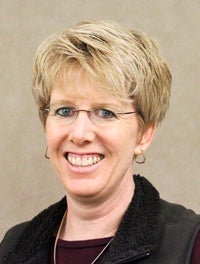Are we getting less healthy?
Published 9:47 am Thursday, March 31, 2011
Freeborn County has dropped a few spots among counties in Minnesota for health factors and outcomes.
However, some local officials challenge the accuracy of the rankings.
The rankings compare counties in each state and are compiled by the University of Wisconsin and the Robert Wood Johnson Foundation.
Eighty-five of Minnesota’s 87 counties were ranked last year and this year. Two counties had insufficient data.
Last year, Freeborn was 61st out of 85 counties for health outcomes. This year, Freeborn County ranked 68th.
Last year, Freeborn was 64th for health factors. It dropped to 69th this year.
Randy Kehr, chairman of the National Vitality Center board of directors, noted the data for the rankings largely come from various years prior to the AARP/Blue Zones Vitality Project, which Albert Lea went through in 2009.
The numbers, he said, do justify the city, county, Vitality Project and Vitality Center taking some of the health initiatives they have, from emphasizing diet and exercise to changes in infrastructure and offerings at stores and restaurants.
“The Vitality Project came along at an extremely opportune time for us, in that regard,” Kehr said.
However, he noted the lower-ranked counties generally had younger populations, such as the Twin Cities metro area or St. Cloud and Rochester. He questioned the way some figures were enumerated, such as recreational facilities. The rankings stated Freeborn County had two recreational facilities.
“Recreational facilities,” the report said, “are defined as establishments primarily engaged in operating fitness and recreational sports facilities, featuring exercise and other active physical fitness conditioning or recreational sports activities such as swimming, skating or racquet sports.”
By that measure, Freeborn County should have the City Arena, Albert Lea Family Y, Snap Fitness, Anytime Fitness, HealthReach, the community gym in Alden and any school that opens its doors to public use through community-fitness programs, Kehr said.
The report said the facilities count comes ultimately from the U.S. Census Bureau.
Kehr also said it fails to consider things like walking trails, lakes, golf courses, community gardens and parks as factors.
Access to healthy food was based on zip codes with grocery stores. Kehr said he felt it was a rather urban way to look at access to food. In most rural counties across America, people drive to the regional center to buy food. The rankings said Freeborn County had one zip code with healthy food, neglecting to consider that the majority of the population is in that zip code.
Sue Yost, interim director of the Freeborn County Public Health Department, also questioned how grocery stores were tallied. She noted Geneva has a grocery store, which should have bumped the number of zip codes with grocery stores to two, and she said some of the meat lockers in small towns offer groceries.
She said the method for looking at access to food doesn’t seem to reflect the number of grocery stores serving the population. Albert Lea has Nelson’s, Walmart Hy-Vee, but it also has some Mexican grocery stores, Albert Lea Farmers Market and Wintergreen Natural Foods. It’s biggest need would be a grocery store to serve the south side of Albert Lea, she said.
The access-to-healthy-foods numbers were based on U.S. Census Bureau information, too. Many other aspects of the rankings came from various agencies, from Medicare to the National Center for Health Statistics to the Environmental Protection Agency, among others.
Yost said one reason for Freeborn County’s low ranking is that it has a large population 75 or older. Another reason is that Albert Lea has more of a blue-collar workforce, while cities such as Rochester have a white-collar workforce. White-collar workers tend to be more educated about health and concerned about taking care of their health.
She said young people moving away impact the numbers, along with elderly people who move to Albert Lea to take advantage of its medical center and senior activities.
While Freeborn County is where it should be for factors like birth weight, preventable hospital stays, graduation rates, social support, care provider ratio, sexually transmitted diseases and homicides — on the good side of the state averages — it ranks on the bad side when it comes to smoking, obesity, drinking, getting mammograms, teen birth rates, fatal car crashes, lack of health insurance and children in poverty.
Yost said she is hopeful the numbers will change as the factors from the Vitality Project and the Statewide Health Improvement Program begin to be included in the results. The large amount of public education about health from the Vitality Project should have an impact, even for members of the public who didn’t participate.
The rankings are helpful, she said, but won’t change what her department works on. The Public Health Department will continue with programs ranging from child birth to SHIP. Funding determines efforts.
“Our funding for smoking went away,” Yost noted as an example.
Kehr said he, too, hopes the numbers for Freeborn County rise once 2009 and 2010 begin to be included in the figures and rankings, as compiled by the University of Wisconsin and the Robert Wood Johnson Foundation.
He said the study was a look at where Freeborn County was before the Vitality Project. The need for health initiatives is why there are so many community members interested in classes on cooking, walking, yoga, purpose and other health aspects.







